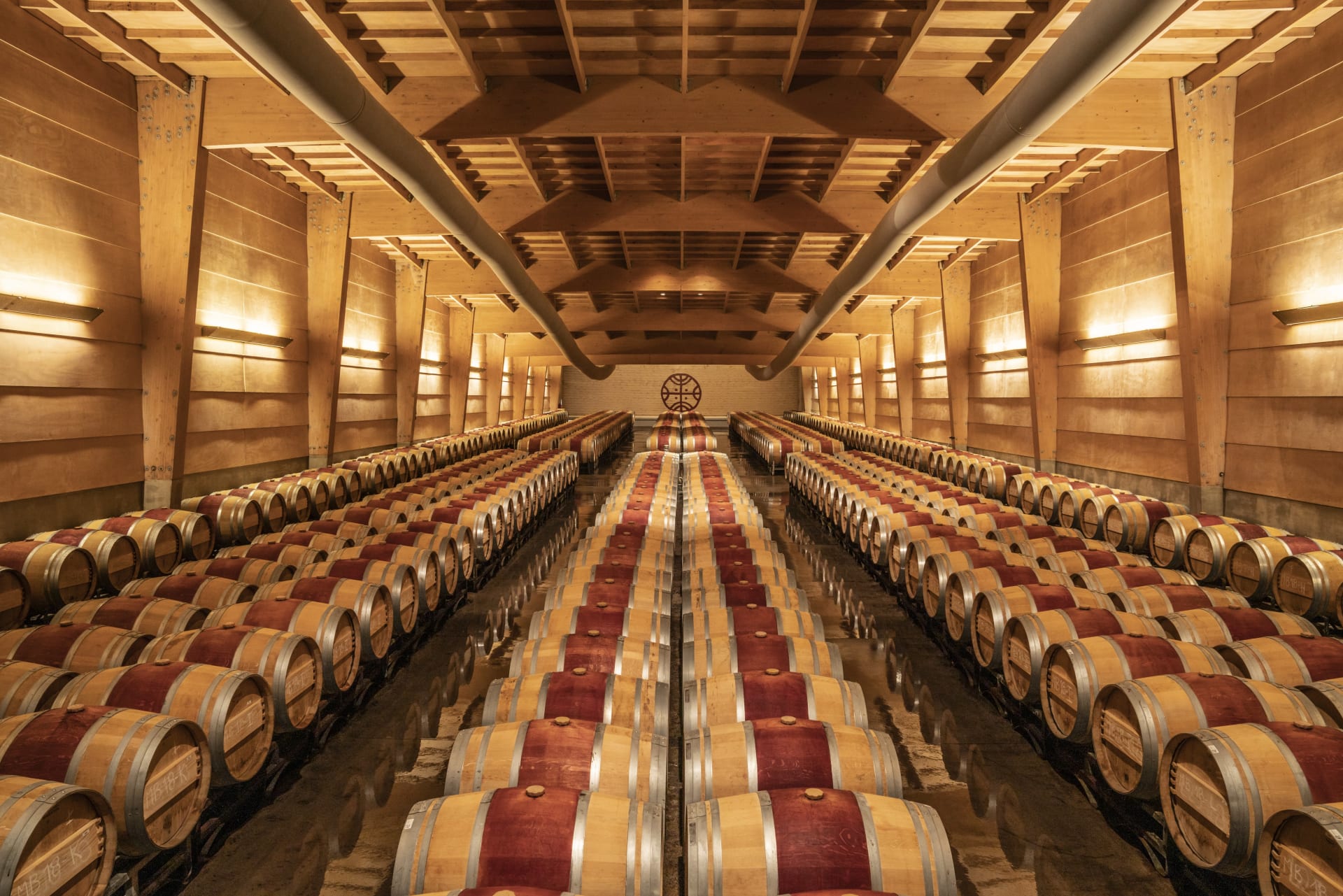Almaviva (375ML half-bottle) 2017
-
James
Suckling - Decanter
-
Tasting
Panel -
Robert
Parker -
Wine
Enthusiast -
Wine
Spectator



Product Details
Your Rating
Somm Note
Winemaker Notes
Deep, intense and opaque ruby red. The nose reveals a generous, powerful and layered bouquet of ripe cassis and blackberries, interwoven with hints of mineral, fine notes of vanilla, coffee, black pepper and earth. Dense and full-bodied, the wine fills the mouth with round, ripe and refined tannins, leaving an overall impression of balance and persistence. Produced from an extremely warm, butsuperb vintage, this well-structured wine of balanced aciditystrikes a wonderful combination of elegance and power, witha very promising long aging potential.
Blend: 65% Cabernet Sauvignon, 23% Carmenère, 5% Cabernet Franc, 5% Petit Verdot, 2% Merlot
Professional Ratings
-
James Suckling
The aromas of blackberry leaves and iodine are wild and exotic here with mussel shells and earth underneath. Full-bodied, tight and chewy with powerful tannins that show muscle. It’s structured and powerful. Dense and very, very deep. Don’t touch this until 2025.
-
Decanter
A Bordeaux blend, dominated by Cabernet Sauvignon (65%) and Carmenère (25%). Power and concentration, elegance and balance. Exuberant aromas of cassis, damson plums and peppers. The palate is complex with cigar box, dark fruit and herbal notes framed by dense and polished tannins, finely integrated oak and finishing on a remarkable lifted length. A wine that will benefit from decanting or laying down.
-
Tasting Panel
A collaboration between Viña Concha y Toro and Baron Philippe de Roth-schild has yielded this remarkable blend of 65% Cabernet Sauvignon, 23% Carménère, 5% Cabernet Franc, 5% Petit Verdot, and 2% Merlot. It’s silky and lush, with length, complexity, and a multifaceted palate of ripe plum, soft herbs, and toasty oak.
-
Robert Parker's Wine Advocate
I retasted the 2016 and 2017 next to the current 2018 to get some comparisons. Tasting the three years side by side, the 2017 Almaviva is clearly the one with more herbal notes and lots of concentration. It was a warm year with low yields and high concentration, but funnily enough, there are more herbaceous notes in the wine. This is a year of power and concentration, but the tannins are nicely coated by juicy fruit. Rating: 94+
-
Wine Enthusiast
A ruby color with rusty edges and aromas of plum, cherry, cassis, olive, chocolate and spice make for an exciting opening. A structured palate is solid in feel but not hard, while this Cabernetled blend tastes of ripe plum and currant along with oak-based spice. A full finish is generous but mellow, meaning this is drinkable now but should improve over the next several years; drink through 2026.
-
Wine Spectator
Taut and savory, with loads of freshly crushed green herbal accents to the mineral-infused red currant and plum flavors. Cedary midpalate, featuring a burnished finish filled with spicy notes. Cabernet Sauvignon, Carmenère, Cabernet Franc, Petit Verdot and Merlot. Drink now through 2026.
Other Vintages
2020-
Robert
Parker -
Wine
Spectator
-
James
Suckling -
Wine &
Spirits -
Robert
Parker
-
James
Suckling -
Tasting
Panel -
Wilfred
Wong - Decanter
-
Robert
Parker -
Wine &
Spirits -
Wine
Spectator
-
James
Suckling -
Robert
Parker -
Wine
Spectator
-
James
Suckling -
Wilfred
Wong - Decanter
-
Wine
Spectator -
Robert
Parker
-
James
Suckling -
Robert
Parker -
Wine
Spectator
-
James
Suckling -
Robert
Parker -
Wine
Spectator
-
James
Suckling -
Robert
Parker -
Wine
Enthusiast -
Wine
Spectator
-
James
Suckling -
Wilfred
Wong -
Robert
Parker -
Wine
Enthusiast -
Wine
Spectator
-
James
Suckling -
Wine
Spectator -
Robert
Parker
-
Wine
Spectator
-
Wine
Spectator
-
Wine
Enthusiast -
Robert
Parker -
Wine
Spectator
-
Wine
Spectator -
Robert
Parker
-
Wine
Spectator -
Robert
Parker -
Wine &
Spirits -
James
Suckling
-
Wine
Spectator -
Robert
Parker
-
Robert
Parker -
Wine
Spectator -
Wine
Enthusiast
-
Wine
Spectator -
Robert
Parker
-
Wine
Enthusiast -
Wine
Spectator
-
Wine &
Spirits -
Wine
Spectator -
Wine
Enthusiast -
Robert
Parker
-
Robert
Parker -
Wine
Enthusiast
-
Robert
Parker -
James
Suckling







Almaviva is the name of both winery and wine born of the joint venture between Baron Philippe de Rothschild and Viña Concha y Toro. It is also that of Pierre de Beaumarchais' character, the "Count of Almaviva" in his Marriage of Figaro, a work Wolfgang Amadeus Mozart later turned into one of the most popular operas ever. The classical epithet, laid out in Pierre de Beaumarchais' fair hand, shares the label with insignia of pre-hispanic roots symbolizing a union of European and American cultures that at every level has created successive bonds over centuries that have evolved a unique identity. The recent synthesis of French tradition and American soil has delivered an exceptional wine embodying the best of both worlds, a Primer Orden that really shines.

One of the world’s most classic and popular styles of red wine, Bordeaux-inspired blends have spread from their homeland in France to nearly every corner of the New World. Typically based on either Cabernet Sauvignon or Merlot and supported by Cabernet Franc, Malbec and Petit Verdot, the best of these are densely hued, fragrant, full of fruit and boast a structure that begs for cellar time. Somm Secret—Blends from Bordeaux are generally earthier compared to those from the New World, which tend to be fruit-dominant.

The Maipo Valley is Chile’s most famous wine region. Set in the country’s Central Valley, it is warm and quite dry, often necessitating the use of irrigation. Alluvial soils predominate but are supplemented with loam and clay.
The climate in Maipo is best-suited for ripe, full-bodied reds like Cabernet Sauvignon (the region’s most widely planted grape), Merlot, Syrah and Carmenère, a Bordeaux variety that has found a successful home in Chile.
White wines are also produced with great prosperity, especially near the cooler coast, include Chardonnay and Sauvignon Blanc.
